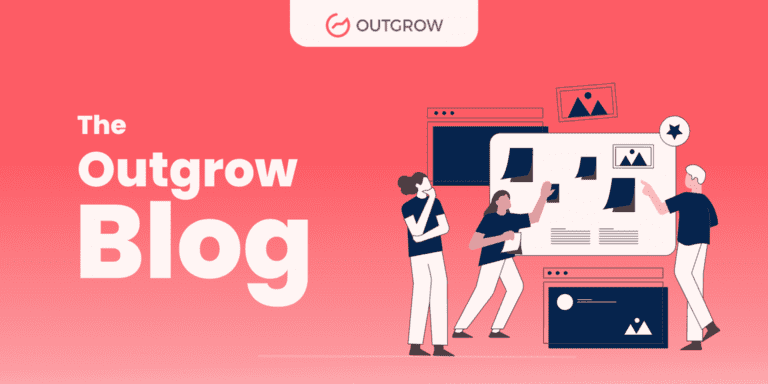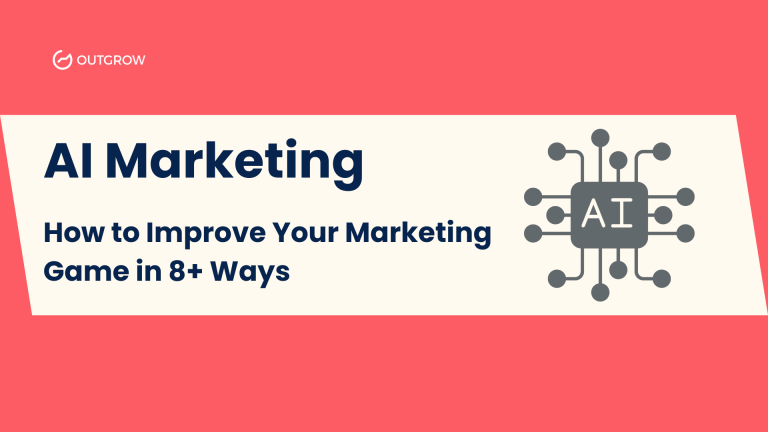Content Psychology: The Science Behind High-Converting Interactive Content
Table of Contents
In today’s digital economy, attention is a precious resource. The typical consumer is exposed to thousands of messages every day. What gets noticed? Interactive content.
Whether it’s a quiz, calculator, or interactive video, this kind of content invites engagement over passive viewing. Why does it do so well? The reason lies in content psychology — a mix of cognitive science, behavioral economics, and emotional design. By understanding the psychology of engagement, marketers can connect with users more meaningfully and achieve higher conversion rates.
What Is Content Psychology?
Content psychology is the examination of how psychological principles — including emotion, cognition, motivation, and behavioral science — affect the way individuals interact with and react to digital content. In industries such as couriers and logistics, applying content psychology can help streamline user interfaces, simplify tracking tools, and foster customer trust—ultimately improving conversion rates and client retention. It combines aspects of cognitive science, behavioral economics, and emotional design to create content that speaks to users on a deep level and inspires them to act.
Whether it’s the interest that powers quiz completions, the ego boost from personalized recommendations, or the dopamine kick of instant gratification, content psychology assists marketers in crafting experiences that delight and convert.
By leveraging these psychological levers, brands can transcend noise and craft relevant, results-oriented interactions that are attuned to how people think and act online.
What Is Interactive Content?
Interactive content is the type of online content that actively involves users by inviting engagement instead of passive consumption. Rather than reading or watching, users engage with content such as clicking, responding, or personalizing information to access a dynamic or personalized experience.
Common Types of Interactive Content:
- Quizzes and Polls
- Calculators
- Interactive Infographics
- Assessments and Surveys
- Interactive Videos
- Chatbots
9 Psychology-Backed Strategies Behind High-Converting Interactive Content
1. Active Engagement Increases Learning and Recall
According to the National Training Laboratories, people retain:
– 10% of what they read
– 20% of what they hear
– 80% of what they experience themselves
In other words, content that invites user engagement naturally boosts recall. Rather than simply reading an article, users who interact with a quiz or calculator learn more efficiently.
Example: A B2B SaaS provider of CRM software might develop a “CRM Maturity Assessment” tool that guides users through a self-assessment, converting vague features into individualized insights.
Outgrow in Action: Outgrow allows brands to develop such tools without developers. Financial planners, for example, have built customized retirement calculators that provide relevant projections depending on each user’s inputs.
2. Gamification Leverages Intrinsic Motivation
Gamification marketing is beyond points and badges. It exploits internal drivers such as achievement, competition, and reward.
According to Gallup, Workplaces that use gamification have a 147% boost in engagement. Why? Dopamine. Game-like mechanics activate brain reward systems, so content feels more like play than persuasion.
Implementation Tip: Add quizzes that score users, provide digital trophies, or permit social comparison. It meets the psychological need of users for recognition.
Outgrow in Action: Brands can employ Outgrow to create “level-up” type quizzes such as a “Fitness Level Challenge” where users are invited to improve their scores and come back for retakes.
3. Personalized Content Strategies Resonate with the “Me” Generation
The psychology of personalization is linked to a cognitive bias called the “self-reference effect” — individuals process information more effectively when it pertains to them.
In a Salesforce research, 66% of shoppers indicated that they expect businesses to know their needs and expectations.
Actionable Strategy: Leverage interactive content to gather user preferences and deliver custom results. A skin-care brand, for instance, can present a “Find Your Skin Type” quiz with product recommendations as a result.
Outgrow in Action: Outgrow enables branching logic, which allows companies to create multiple-choice quizzes and calculators that are personalized to various personas.
4. Visual Engagement Strengthens Understanding
Humans process visuals 60,000 times faster than text. Visuals not only grab attention but also simplify complex concepts. Digital marketing pros often leverage this advantage by incorporating interactive visuals to boost user understanding and engagement.
Interactive content tends to combine infographics, charts, or GIFs in order to steer user comprehension. This aligns with dual-coding theory, whereby individuals learn better when information comes in both visual and verbal modes.
Practical Tip: Integrate interactive infographics or product recommendation sliders on landing pages.
5. Emotional Triggers Drive Sharing and Engagement
Emotionally charged content is more likely to be shared and go viral. Harvard research has found that emotionally charged content receives more shares.
Interactive styles such as personality tests, “Which Type of Leader Are You?”, or fear-provoking tests (“Is Your Website Secure Enough?”) produce emotional responses.
Use Case: A travel company can develop a “Dream Destination Matcher” quiz that leverages aspiration and nostalgia, inviting social sharing.
Outgrow in Action: Brands can quickly create such emotionally engaging quizzes with Outgrow, making content shareable and memorable.
6. Immediate Feedback Satisfies Instant Gratification
In an era of fleeting attention, individuals hunger for immediate results. Interactive content fulfills this desire for instant gratification, which is strongly connected to our brain’s dopamine system.
Behavioral Insight: When users receive immediate feedback, they are more likely to believe the content and move on to the next step (e.g., clicking on a CTA or sharing results).
Example: An ecommerce brand can develop a “Product Fit Quiz” that suggests suitable items on the spot.
Outgrow in Action: Outgrow’s technology enables brands to provide users with personalized outcomes the moment they finish a quiz or calculator.
7. Social Sharing Increases Reach
Everyone loves to share something that speaks to their identity. Shareable formats such as “What Kind of Leader Are You?” or “Marketing Style Quiz” provide shareable results.
According to BuzzSumo, Quizzes get over twice the number of shares that standard blog posts do. Bite-sized, personalized content aimed at social platforms such as Instagram or LinkedIn has a disproportionate reach.
Implementation Tip: Add social buttons to result pages with customized messages for effortless sharing.
8. Data Collection Informs Strategy
Each interaction in an interactive experience is a data point. It’s gold to marketers.
Collect insights like:
– Drop-off rates
– Most selected answers
– Completion time
How to Use It: Marketers can leverage this behavioral data to enhance product suggestions, nurture emails, and audience segmentation.
Example: A SaaS business could analyze answers to a “Tech Stack Audit” quiz to learn about shared client pain points.
Outgrow in Action: With Outgrow’s analytics dashboard, you receive detailed data that can improve your targeting and optimize subsequent campaigns.
9. Value-Driven Content Wins Trust
Psychology’s law of reciprocity describes why we’re inclined to pay back a favor. If brands provide some value (such as personalized results or evaluations), trust and positive feelings grow.
Implementation Tip: Emphasize usefulness. Make sure your quiz or calculator provides value rather than simply generating leads.
Example: A nutrition counselor providing a “Personalized Diet Plan Generator” gains credibility while assisting users with an actual problem.
Outgrow in Action: Outgrow enables professionals to provide truly useful results, building a more meaningful relationship between brand and user.
Want to build psychology-based interactive content without coding? Try Outgrow’s free quiz builder.
Real-World Case Studies
Toxigon’s User Retention Surge
Toxigon, a cybersecurity company, used an engaging “Threat Readiness Assessment” for leads. Users responded to 10 scenario questions, getting a personalized vulnerability score and solutions list.
Results:
– 41% demo booking boost
– 23% increase in newsletter subscriptions
– 62% social share rate
The success wasn’t in the content. It was in the psychological architecture behind it — personalization, instantaneous feedback, and social validation.
SYMA Media’s Lead Gen Pivot
SYMA Media utilized Outgrow to swap out static ebooks with interactive ROI calculators for their agency offerings.
Impact:
– Reduced lead acquisition cost by 38%
– Enhanced time on page by 140%
– Increased lead conversion by 31%
This indicates how actionable, psychology-based content beats conventional formats in today’s competitive market.
Outgrow Case Studies: ROI and Real Results
Conclusion: Utilizing Content Psychology with Outgrow
The psychology of content isn’t guesswork. By building experiences based on established principles — from gamification to personalization to visual engagement — you not only gain attention, but also trust and conversions.
Outgrow’s interactive content solutions provide a platform for implementing these strategies without technical hassle. Marketers can focus on engaging their audience through personalized, effective experiences.

Ready to apply content psychology to your funnel? Try Outgrow’s free quiz builder.
FAQs About Content Psychology

Ankit Upadhyay is a Digital Marketing and SEO Specialist at Outgrow. With a passion for driving growth through strategic content and technical SEO expertise, Ankit Upadhyay helps brands enhance their online visibility and connect with the right audience. When not optimizing websites or crafting marketing strategies, Ankit Upadhyay loves visiting new places and exploring nature.




